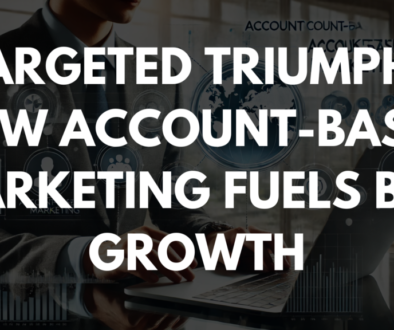Inside Sales in the Digital Age
Field sales have long been the core of B2B. It focused on in-person meetings, frequent travel, and long sales cycles.
Now, a more agile and efficient model is taking the lead. Inside sales is creating a new standard. With the help of digital tools, sales teams connect with prospects, build trust, and close deals directly from their desks.
Inside sales brings clarity, speed, and measurable results. It supports better workflows, stronger engagement, and higher productivity.
This approach reflects a clear shift in strategy. Companies are choosing inside sales to meet the needs of a digital-first world. It offers practical solutions, powerful technology, and greater flexibility for modern teams.
In this article, you’ll learn what inside sales really means, how it benefits your business, what to plan for, and which steps help you succeed.
We’ll also look ahead to the future of inside sales and how it continues to grow as the leading approach for top-performing B2B sales teams around the world.

What Is Inside Sales
Inside sales is when you sell products or services without meeting the customer in person. You use phone, email, video calls, and chat. You work from your desk, not the road.
It replaces field sales. You save time, reduce costs, and reach more prospects in less time.
Inside sales fits the digital buyer journey. Decision-makers prefer fast, remote contact. You meet them online and move the sale forward immediately.
Benefits of Inside Sales
1. Lower Sales Costs
Inside sales removes travel, lodging, and event expenses. You run lean. You invest in better tools and higher-performing sales reps.
2. Higher Productivity
You contact more leads per day. You switch between calls, emails, and CRM updates without delay. You close more deals with fewer interruptions.
3. Better Lead Targeting
You use sales data and CRM filters to find the right decision-makers. You run multichannel outreach and adjust based on real-time feedback.
4. Faster Sales Cycles
Inside sales teams reduce delays. You skip scheduling in-person meetings. You send follow-ups immediately. You guide prospects through the pipeline quickly.
Challenges in Inside Sales
1. Remote Trust Building
You replace body language with voice and clarity. Strong communication and fast follow-ups help you move conversations forward.
2. Digital Noise
Prospects receive hundreds of emails and calls. You need sharp subject lines, clear value, and timing that fits their buying cycle.
3. Constant Tech Updates
Sales tools change fast. You stay effective by learning CRM updates, automation platforms, and AI assistants that reduce manual work.
4. Team Coordination
Remote sales teams need structure. Use daily check-ins, clear KPIs, and shared dashboards to track performance and maintain focus.
Strategies for Inside Sales Success
Inside sales teams succeed when they take clear, focused actions. The right tools, mindset, and systems create a strong foundation for growth. Here are five essential strategies:
Use the Right Technology
Strong tech tools help inside sales teams work faster and smarter. CRM systems track leads and deals. Video call platforms create instant meetings. AI tools sort leads, suggest next steps, and help you focus on high-value prospects. The right setup removes manual work and improves every sales conversation.
Improve Sales Communication
Inside sales depends on clear and persuasive communication. Reps must speak with confidence, write concise messages, and listen carefully. Short emails with strong subject lines. Focused calls with clear next steps. Good communication builds progress at every stage of the sales cycle.
Focus on Relationships
Strong sales come from trust. Inside sales reps must act as advisors, not just closers. When you understand your client’s goals and offer real solutions, you stay top of mind. This approach leads to repeat deals, referrals, and long-term value.
Use Sales Data
Sales teams must rely on facts, not guesswork. Use analytics to track lead behavior, understand deal timelines, and adjust your strategy. Look at open rates, call logs, and pipeline stages. Data helps you improve every action and make smarter choices fast.
Build a High-Performance Culture
Inside sales works best in a strong team culture. Managers should set clear goals, give feedback, and recognize wins. Regular updates, shared tools, and clear dashboards help teams stay aligned. A positive, results-driven environment supports better performance.
The Future of Inside Sales
Inside sales continues to grow. Several trends will shape how teams operate and win deals.
Artificial Intelligence in Sales
AI tools already score leads, suggest follow-ups, and generate outreach templates. They help reps stay focused and reduce repetitive tasks. The best teams use AI to boost productivity and accuracy.
Growth of Video Calls
Video calls add face-to-face value without travel. Reps explain solutions, show demos, and build rapport through the screen. Video outperforms phone and email for complex sales conversations.
Social Selling on LinkedIn
LinkedIn helps reps find prospects, build visibility, and start real conversations. Social selling works because it matches how buyers already research. Reps who share insights and engage with target accounts win attention faster.
Account-Based Sales Strategy
Account-based selling targets high-value companies with custom messaging. Instead of casting a wide net, your team focuses on key accounts with the most potential. This approach increases conversion rates and shortens sales cycles.
Embrace the Inside Sales Model
Inside sales reshapes how modern B2B teams operate. It replaces travel with tools, slow meetings with fast outreach, and guesswork with data.
Companies that build strong inside sales teams get results faster. They stay ahead by hiring skilled reps, using the right tools, and building a culture of learning and action. Inside sales is no longer a backup plan. It is the strategy that drives B2B growth.

Conclusion: Embrace the Inside Sales Model
Inside sales is no longer optional. It has become the core of modern B2B sales.
Companies use it to reduce costs, speed up sales cycles, and reach more prospects. Tools like CRMs, AI, and sales platforms help teams work smarter and make better decisions in real time.
Inside sales also fits the remote work culture. Sales teams stay productive from anywhere and businesses can hire top talent without location limits.
But success still depends on people. Strong communication, personalized outreach, and real client focus set top performers apart.
Inside sales teams that use the right tools, focus on relationships, and keep learning will lead the market. This model delivers speed, clarity, and growth. The companies that invest now will stay ahead.





